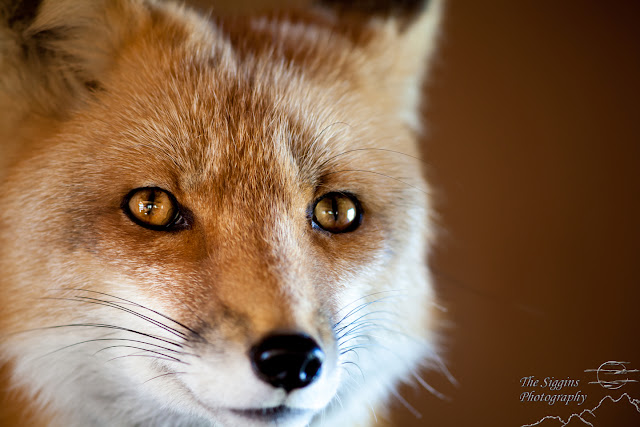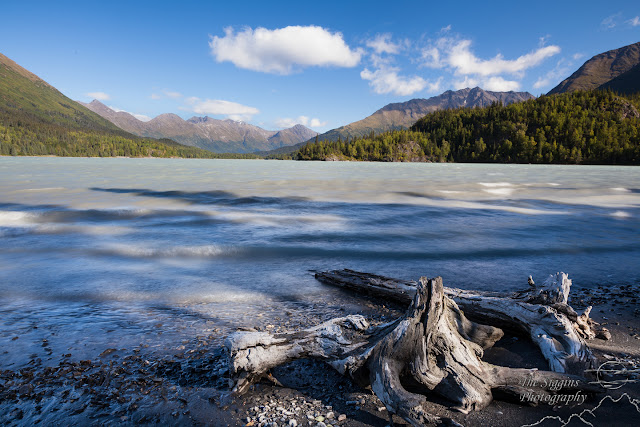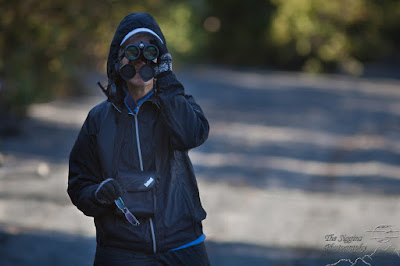As promised, today I'm reliving our experience at the Exit Glacier near Seward Alaska. We were in the part of Kenai Fjords National Park that is accessible by car, just a short drive from Seward. Nearly 40 glaciers flow from the Harding Icefield in the National Park. We had planned to kayak to the other side of the Icefield where the glaciers flow into the Fjords, but that wasn't to be on this trip. Gale force winds and 10 foot seas are not idea conditions for kayaking among the glaciers.
These photos were actually taken on two different days. The first day we only explored the lower part of the Exit Glacier.
 |
Exit Glacier
|
It is one of the most accessible valley glaciers in Alaska and is a visible indicator of glacial recession due to climate change. Exit Glacier retreated approximately 187 feet from 2013 to 2014 and the recession continues to accelerate. We'll not get into the cause here.
It received its name because it served as the exit for the first recorded crossing of the Harding Icefield in 1968.
 |
| Glacier was here in 2005 |
There are a number of hiking trails that start at the Visitor Center. Most people do the short hikes to where you can see the glacier up close and see how far it has retreated. It's easily accessible by most anyone.
Sometimes it's possible to walk right up to the glacier. We were not able to get to it because the runoff was too high to cross. We weren't about to wade across knee deep freezing water that was rushing around the rocks.
 |
| Glacier Melt Runoff |
Glacial ice is a different color from regular ice. It is so blue because the ice is very dense from years of being compressed by the weight of snow and ice. The dense ice of the glacier absorbs every other color of the spectrum except blue - so blue is what we see!
 |
| Blue Ice |
The next day we went back to try the Harding Icefields Hike. When we got to the Visitors Center it was cold! The wind was blowing across the icefield and down the glacier right into the parking lot. Knowing we were going to climb several thousand feet and we expected to be in extreme cold conditions. We bundled up and headed up the trail.
At one point we had a pretty good view of the Exit Glacier from the side. We could see a guided group walking on the glacier. It looked like fun and maybe we'll do that next time.
You can't get an appreciation of the size of the glacier in the photo above. Can you find the people in the photo below? They are there.
It turned out to be a lot warmer than we anticipated. After a while a lot of our clothes were in our packs. At the 1.4 mile mark, after climbing about 1,000 feet we reached Marmot Meadows. Up to this point we had been hiking in trees or brush. The meadows were open and covered with lush green foliage. This was a nice place for a snack break.
 |
| Marmot Meadows |
There was a group of Mountain Goats there also taking a snack break. They were concentrating on eating and didn't pay any attention to us.
 |
| Billy or Nanny? |
Both male (Billy) and female (Nanny) mountain goats have beards, short tails, and long black horns. They are right at home on the steep cliffs, negotiating hill sides with a 60 degree slant!
 |
| A Little Head Butting |
 |
| Little Kid |
After a while the goats moved on and it was time to start the more strenuous part of the climb. It is 4.1 miles and 3.300 foot elevation gain from the trail head to the end of the trail. We still had a ways to go. Very soon it was getting cold and we had all our layers of hiking clothes back on.
When we reached the icefield the views were spectacular! Ice as far as you can see with the tops of mountains peaking out of the ice.
 |
| Harding Icefield |
It was a beautiful day with blue blue skies and white clouds. It was also very windy. Those gale force winds down at sea level were really strong up here at the mountain top. There were places where we almost turned back because the trail was narrow on a steep grade and the wind was trying to blow us off the mountain.
 |
| Standing Against The Wind |
We persevered and reached the "End Of The Trail" at mile 4.1. The elevation here was 3,842 feet above sea level.
The terrain in this area looked like Mordor in the Lord of The Rings. Nothing grows up here except some mosses in the rocks. The ground is covered with glacial moraine and snow. Moraines are accumulations of dirt and rocks that have fallen onto the glacier surface or have been pushed along by the glacier as it moves. At one time all this land was covered by glaciers and this moraine was left by the glaciers as they retreated.
It was time to head back down the mountain. Here's our view as we started back. Can you see the hiker on the trail?
 |
| The Long Trail Back |
When we got back to the Visitors Center around 5:30 in the afternoon we saw the following sign posted at the trail head.
The park was closing at midnight and everyone, including back country campers, had to be out. Recall what happened in Alaska on September 1? President Obama visited the park and hiked up to the Exit Glacier overlook the next day. We noticed there were porta-potties near the trail head that weren't there earlier in the day. I guess those were for the Secret Service Agents that had to stay out there all night.
This hike was one of the highlights of our trip. I can recommend it for anyone who is fit enough to do the strenuous hike. Plan to spend a day. It will take 6 - 8 hours.
























































